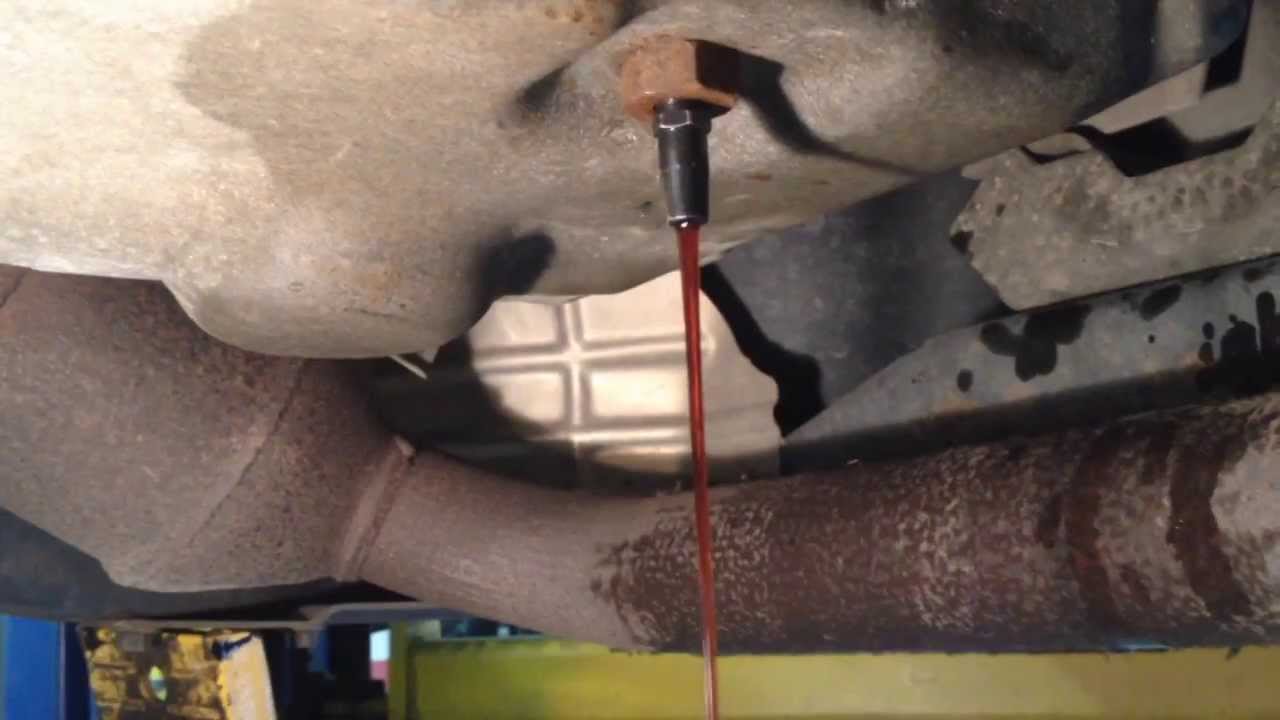Ford Explorer Transmission Solenoid Problems
The Ford Explorer is a popular SUV, and like all vehicles, it has its share of common problems. One such problem is transmission solenoid problems. The transmission solenoid is responsible for controlling the flow of transmission fluid.
When it fails, the transmission can slip or jerk. In some cases, the car may not go into gear at all.
If you own a Ford Explorer, you may have experienced transmission problems. The most common problem is with the transmission solenoid. The transmission solenoid controls the flow of fluid in the transmission and helps to shift gears.
If the solenoid is not working properly, it can cause the transmission to slip or not shift gears at all.
There are a few symptoms that you may notice if your Explorer has a transmission solenoid problem. The first is that the engine may rev up but the vehicle does not move.
This is because the fluid is not flowing correctly and therefore the gears are not engaging. You may also notice that the vehicle jerks when shifting gears or that it takes longer than usual for the gear to engage.
If you think you may have a problem with your transmission solenoid, it’s important to take it to a mechanic as soon as possible.
They will be able to diagnose the problem and tell you what needs to be done to fix it. In some cases, simply replacing the solenoid will solve the problem but in other cases, more extensive repairs may be necessary. No matter what, it’s important to get your Explorer fixed so that you can continue driving without any issues!

Credit: www.importitall.co.za
What are the Symptoms of a Transmission Solenoid Going Out?
A transmission solenoid is an electronically controlled valve that regulates fluid flow through the transmission. Solenoids are used to control gear changes in an automatic transmission. When a solenoid goes bad, it can cause problems with shifting gears.
The most common symptom of a bad transmission solenoid is erratic shifting. The car may shift gears on its own, or the shifts may be delayed. You may also notice that the car doesn’t shift into the highest gear, or that it downshifts suddenly when you come to a stop.
These symptoms can be accompanied by a check engine light.
Other symptoms of a failing transmission solenoid include leaking fluid from the Transmission Control Module (TCM), and burnt-out light bulbs on your shifter indicator panel. If you notice any of these symptoms, it’s important to have your car checked out by a mechanic as soon as possible.
Ignoring these signs can lead to major damage to your transmission, and ultimately costly repairs.
Can I Replace Transmission Solenoid Myself?
If your car is having issues with shifting gears, it’s possible that the transmission solenoid is to blame. But before you attempt to replace it yourself, there are a few things you should know.
For starters, the transmission solenoid is located within the transmission itself, so replacing it will require some knowledge of auto repair and a bit of elbow grease.
Additionally, because the transmission solenoid is responsible for controlling fluid flow within the transmission, it’s important to be extra careful when removing and installing the new one – a mistake could cause serious damage to your car.
That said, if you’re feeling up to the task and have the necessary tools and parts on hand, here’s a basic overview of how to replace a transmission solenoid:
1) Remove the battery cable from the negative terminal of your car’s battery.
This will prevent any electrical shocks while you’re working on the car.
2) Locate the transmission solenoid – it will be attached to either the side or bottom of the transmission housing.
3) Using a wrench or socket set, loosen and remove all bolts holding the solenoid in place.
Take care not to drop anything down into the Transmission while doing this!
4) Gently pull out the old solenoid (it may still be attached to electrical wiring), being careful not to damage any surrounding components. If necessary, use pliers or wire cutters to detach it from its wires.
5) Inspect both ends of each wire for corrosion or damage – if any is found, trim off any damaged sections with wire cutters and strip 1/2 inch of insulation from each end using wire strippers.
6) Attach each wire (one at a time) onto its corresponding terminal on the new solenoid (use pliers if needed), then twist each connection until tight.
7) Carefully lower Solenoide back into place making sure that nothing gets caught underneath It as doing so could cause problems lateron 8.) Finally once everything looks good Reattach all The bolts You removed earlier making sure they are nice And tight
9.)Reconnect The battery cable To The Negative terminal Of The battery
How Do You Fix a Faulty Transmission Control Solenoid?
A transmission control solenoid is a device that controls the flow of transmission fluid in an automatic transmission. The solenoid is controlled by an electrical signal from the engine control module (ECM). When the ECM wants to shift gears, it sends a signal to the solenoid that opens a valve and allows transmission fluid to flow into the appropriate chamber in the transmission.
If your car has been having trouble shifting gears, it may be due to a faulty transmission control solenoid. Here’s how you can fix it:
1. Check the Transmission Fluid Level
The first thing you’ll want to do is check the level of your transmission fluid. If it’s low, topping it off may solve your problem. Low fluid levels can cause all sorts of problems with automatic transmissions, so this is always a good place to start.
2. Inspect the Transmission Filter and Solenoid Pack
If topping off the fluid doesn’t fix your shifting issue, then you’ll need to take a closer look at your filter and solenoid pack. These are located inside the transmission itself, so you’ll need to remove them for inspection.
If they’re dirty or clogged, cleaning or replacing them should solve your problem.
3. Replace the Transmission Control Solenoid
If inspecting and cleaning your filter and solenoid pack doesn’t do the trick, then you may have a more serious issue with your transmission control solenoid itself.
In this case, you’ll need to replace it with a new one. This is usually not a difficult job, but if you’re not comfortable doing it yourself, taking it to a mechanic is probably your best bet.
How Do You Check a Transmission Solenoid?
A transmission solenoid is a vital part of a vehicle’s automatic transmission system. It helps to control the flow of hydraulic fluid within the transmission, and allows the transmission to shift gears smoothly. There are two types of transmission solenoids: shift solenoids and lock-up solenoids.
Shift solenoids are responsible for controlling the gear shifts within the transmission. They are activated by an electrical signal from the vehicle’s computer, and help to engage or disengage the various gears in the transmission. Lock-up solenoids help to engage or disengage the torque converter clutch, which helps to improve fuel efficiency by reducing engine drag when the vehicle is travelling at high speeds.
To check a transmission solenoid, you will need to first identify which type of solenoid it is. Shift solenoids are typically located on or near the valve body of the transmission, while lock-up solenoids are usually located on or near the torque converter itself. Once you have identified which type of solenoid it is, you can then test it using a multimeter set to Ohms mode.
For shift solenoids, connect one lead of your multimeter to each terminal on the connector for the shift solenoid (typically there will be two terminals). If there is continuity between these terminals, then this indicates that the shiftsoloenoid is working correctly. If there is no continuity between these terminals (i.e., ifthe multimeter reads “OL” for infinite resistance), then this indicatesthatthe shiftsolenoidis defectiveand needs to be replaced.
Forlock-upsolenoids,connectoneleadofyourmultimetersettotheground(black)terminalonthissolenoiddeviceandtheotherleadtothepositive(red)terminalonthedevice.(Therewillprobablyonlybetwo wiresconnectedtoeachlockupsolenoidanyway.)Ifyougetareadingofzeroohmswhencheckingforcontinuityinthismannerbetween groundandthepositive terminalofthelockupsolenoidalsoindicatesthatthesolenoidisworkingproperly; anythingelsemeansthatthedeviceisdefectiveandneedstobereplaced aswell.
Ford Explorer 5R55S Transmission Solenoid Pack Replacement
Ford Explorer Transmission Problems
The Ford Explorer is a popular SUV, but it’s not without its problems. One of the most common issues that owners face is transmission problems.
If you’re having trouble with your Ford Explorer’s transmission, there are a few things you can do to try and fix the problem.
First, check the fluid level and make sure it’s full. If it’s low, topping it off may solve the problem.
If that doesn’t work, you may need to have your transmission flushed and replaced.
This is a more serious repair, but it may be necessary if your transmission is slipping or not shifting properly.
Whatever the cause of your transmission problems, be sure to take your SUV to a reputable mechanic for diagnosis and repair. With proper care, your Ford Explorer will continue to provide reliable transportation for many years to come.
Conclusion
If you’re experiencing transmission solenoid problems in your Ford Explorer, you’re not alone. Many Explorer owners have reported this issue, and it can be a real pain. Transmission solenoids control the flow of fluid in the transmission, and when they go bad, the transmission can slip or even fail completely.
In some cases, the problem may be as simple as a dirty transmission filter, but in other cases, it may be necessary to replace the entire transmission. If you’re having trouble with your Explorer’s transmission, take it to a qualified mechanic for diagnosis and repair.





